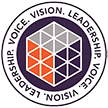Peer Pressure and Substance Abuse: What’s the Connection?

As a new academic year begins, students and parents alike are engulfed in a whirlwind of anticipation and challenges. Among these challenges, the looming shadow of peer pressure leading to substance misuse, especially among teenagers and young adults, cannot be ignored.
Disturbingly, statistics highlight that Texas stands out with one of the most alarming rates of teen substance misuse in the country.
In Texas, 3.91% of teens aged 12 – 17 years old reported misusing pain relievers while 9.02% reported abusing alcohol in the last month. 177,000 or 7.07% of teens in the same range, reported using drugs in the last month. Of those teens, 83.62% reported using marijuana in the past 30 days.
Delving into the nuances of peer pressure, this article sheds light on its connection with teen substance abuse, its implications, and the roadmap to prevention.
Youth Substance Abuse Statistics
- Substance abuse among youth is a major concern, with 8.33% of 12- to 17-year-olds reported using drugs in the last month and up to 0.02% having used heroin.
- The use of substances like nicotine (found in vapes), cannabis (weed), and alcohol among teenagers stayed mostly the same in 2022. These are the most common substances used by teens.
- Alcohol is the most commonly abused substance among adolescents, with 11.72 million 18- to 25-year-olds reporting binge drinking in the last month and 61.5% having used alcohol by 12th grade.
- Marijuana is one of the most widely used illicit substances among teenagers, with 6.9% of 12th graders reporting daily use and 35.2% using it in the past year.
- Overdose deaths due to opioids have increased 500% since 1999 for 15- to 24-year-olds, while 5.3% of 12th graders have abused opioids other than heroin at least once and 4.4% abused Adderall in the past year.
- Stimulant addiction is more common among teens than cocaine or amphetamine use, with 1.6% of 12th graders having tried to crack cocaine at least once and 8th graders 56.1% more likely to have tried prescription amphetamines compared to 2017’s graduating class.
These trends show us that while some progress has been made in reducing substance use among teenagers, there are still areas where we need to do better, especially when it comes to prescription stimulants, vaping, and weed use. We must keep talking about these issues and educating young people about the risks of substance use.
Understanding Peer Pressure: More Than Just Influence
Peer pressure, at its core, is the compelling force exerted by individuals of similar age, social engagements, or affiliation. It’s a spectrum ranging from constructive reinforcement to driving individuals towards detrimental habits.
Peer pressure is effective as it lies in the “risk versus reward” equation that dominates young minds when standing at crossroads, often pushing them into conforming to group norms even against their better judgment.
Decoding the ‘Risk vs. Reward’ Dynamics in Substance Misuse
For teenagers on the brink of making choices about substance use, the “risk vs. reward” equation is monumental. Succumbing to the urge to fit in, they might see substance use as a rite of passage, a means to move up the social hierarchy, or even an escape route from emotional turmoil. Conversely, the dread of repercussions, health ramifications, or tarnishing their image might hold them back.
The real concern is the distorted perception of risk they harbor, paving the way for dire outcomes.
The Domino Effect: Peer Pressure Spiraling into Substance Misuse
Peer pressure lays the groundwork for substance misuse in multifaceted ways:
- Gateway Phenomenon: the theory proposes that teenagers who experiment with alcohol and tobacco (which are legal for adults and relatively easy to obtain) are more likely to move on to illicit substances like marijuana. From there, they may further progress to harder drugs such as cocaine or heroin.
- Social Isolation: If a teenager starts using substances because of peer pressure, they might drift away from their old friends who don’t use these substances. This can lead to feelings of isolation. A teenager’s interest in other activities may also decrease.
- Pressure as Bullying: In some cases, peer pressure can take a more aggressive form, with individuals being directly coerced or even bullied into trying drugs or alcohol. This might involve threats, ridicule, or exclusion for refusing to participate.
Fighting the Battle: Strategies Against Peer Pressure-Driven Substance Misuse
Youths can employ several strategies to combat peer pressure-induced substance misuse:
- Education: Knowledge is power. Understanding the dangers and consequences of substance misuse can help young people make informed decisions. This includes knowing about the physical health risks, the potential for addiction, legal implications, and the impact on their future.
- Assertiveness Training: Learning how to confidently say “no” is a crucial skill. Assertiveness training can help youths resist pressure without feeling awkward or losing friends.
- Building Self-Esteem: Youths with high self-esteem are less likely to succumb to peer pressure. Encourage them to engage in activities they excel at and enjoy, which can boost their confidence and self-worth.
- Choosing Friends Wisely: Encourage kids and teens to choose friends who share their values and interests. Having friends who respect their decision not to use substances can significantly reduce the pressure to conform.
- Seeking Support: If they’re facing intense peer pressure, it’s essential to seek support from trusted adults like parents, teachers, or counselors. These individuals can provide guidance and help them navigate through challenging situations.
- Making a Plan: Youths can prepare for situations where they might be pressured to use substances. This could include rehearsing responses, deciding on an exit strategy, or agreeing on a ‘code word’ with parents for a quick pick-up.
- Healthy Coping Mechanisms: Encouraging healthy ways to cope with stress, such as sports, art, music, or meditation, can reduce the temptation to use substances as an escape.
- Understanding the Consequences: Realizing the potential negative impact of substance misuse on their goals (like college admission, athletic performance, etc.) can deter youths from giving in to peer pressure.
Remember, it’s important to maintain open lines of communication, so youths feel comfortable discussing these issues and seeking advice when faced with peer pressure.
A Collective Duty: Ensuring the Safety of Our Younger Generation
The battle against peer pressure and its association with substance use disorder, especially in states like Texas, mandates a community-wide effort. It’s pivotal for parents, educators, and community leaders to stay informed and transmit knowledge about the perils of peer pressure. Fostering trust, endorsing positive endeavors, and exemplifying commendable behavior can be instrumental in shielding our youth from the hazards of substance misuse.
For teens grappling with substance abuse, rest assured, institutions like Luna Recovery offer a beacon of hope and a pathway to recovery. We provide addiction treatment for teenagers. By joining forces, we can envision a future for our youngsters where they are unburdened by the adverse clutches of peer pressure and drug abuse.
Proactive Measures: Prevention Over Cure
In the ever-evolving landscape of adolescence and young adulthood, proactive measures are more effective than reactionary ones. Here are some steps we can implement to mitigate the effects of peer pressure and the resulting substance abuse:
Awareness is the first line of defense. Regular workshops and seminars in schools, colleges, and community centers can be a game-changer. By ensuring that young individuals are well-informed about the realities and repercussions of substance misuse, we can alter perceptions and make them think twice before succumbing to peer pressure.
Counseling sessions, both group and individual, can equip youngsters with tools to resist peer pressure. By understanding their worth and learning to value their boundaries, they can stand firm in their convictions. This extra support can provide teens with a pivotal boost to saying “no.”
Celebrating stories of individuals who have successfully resisted peer pressure or overcome substance misuse can inspire others. These tales of resilience can serve as a beacon, reminding youngsters that it’s possible to traverse challenging terrains without succumbing to societal pressures.
Maintaining open communication lines between parents and children can’t be stressed enough. When children feel comfortable discussing their struggles with their guardians, it becomes easier to guide them through their dilemmas and provide timely intervention.
Support groups where individuals can share their experiences, challenges, and strategies to overcome peer pressure can be a sanctuary for many. Knowing they aren’t alone in their battles can provide immense solace and strength.
Policymakers need to recognize the correlation between peer pressure and substance misuse. By enacting stringent laws that target substance suppliers, especially around educational institutions, we can nip the issue in the bud.
Looking for Teen Treatment? We Can Help

Struggling with mental health or substance use is a heavy burden for any teen to carry, and no one should have to face these challenges alone. Luna Recovery is here to help. We provide a lifeline to teens and their families, offering expert treatment and therapy options for mental health and co-occurring disorders.
Luna Recovery understands that each individual’s journey is unique, and they are committed to providing personalized care tailored to your needs. One of the ways they do this is by offering free mental health evaluations for teens. This initial step allows them to gain a comprehensive understanding of the teen’s situation, which then informs the subsequent therapy process.
Parents and teens are encouraged to reach out to Luna Recovery, ask questions, and explore the available treatment options. There’s no obligation to proceed further, but taking this first step could be pivotal in the journey toward recovery.
The decision to seek help can have a profound impact on a teen’s future. It’s not just about overcoming the present challenges. Set the stage for a healthier, happier life down the road. By choosing Luna Recovery, you’re not only tackling the immediate issues at hand but also investing in a positive, lasting change. You’re choosing a team that will stand by your side, guiding and supporting you every step of the way.
Navigating a Complex Challenge Together
The intertwining of peer pressure and substance abuse is a multifaceted problem that requires a holistic approach. With collaborative efforts from educators, parents, policymakers, and the community at large, we can create a supportive ecosystem. This ecosystem, grounded in understanding, awareness, and empathy, can guide our youth toward making informed choices, ensuring a brighter, healthier future free from the shadows of peer pressure and substance misuse.
Dr. Allaire received his Bachelors of Science in Biology from the University of Houston, as Valedictorian of the College of Natural Sciences and Mathematics, and his Medical Doctorate from Baylor College of Medicine, where he served as Chief Resident. He is the medical monitor for the Physician Counseling Committee of the Harris County Medical Society and the Medical Director of Serenity House Detox. Dr. Allaire specializes in medically assisted detox cases, treating patients in recovery from addiction or other mental health disorders, the medical assessment and monitoring of patients with addictive disorders, medical care related to eating disorders and the medical treatment of patients with mental health conditions.



